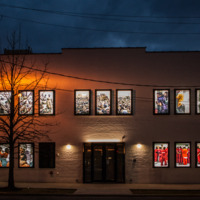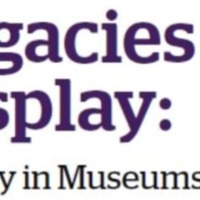
Legacy Museum
Open since April 2018, the Legacy Museum is built on the site of a former warehouse where enslaved Africans were imprisoned. The site is located between an historic slave market and the main river dock and train station where tens of thousands of enslaved people were transported through at the height of the domestic slave trade. Today it is a short walk from the National Memorial for Peace and Justice in the heart of downtown Montgomery, Alabama. The museum’s mission is to acknowledge and present the legacies of slavery, lynching, and racial segregation in the United States. The Legacy Museum is used to educate people about long-standing racial inequality in America and prompt them to search for truth and reconciliation with the aim of developing real solutions to contemporary problems. Its managing organisation, the Equal Justice Initiative, was founded in 1989 by Bryan Stevenson and was initially set up to help the poor, the incarcerated, and the condemned. In continuing this spirit of active community engagement, the museum also runs concerts and academic summits, and actively participates in human rights campaigning in Alabama.
The museum exhibition begins by showing replica constructions of slave pens, accompanied by unique audio and visual effects, attempting to allow visitors to empathise with an imprisoned slave waiting to be sold at the nearby auction block. There are also first-person accounts from enslaved people, portrayed on film by actors. Alongside these audio-visual experiences there are also more traditional exhibits that examine America’s history of racial injustice and its legacy, drawing connections across generations of Americans impacted by racial difference. These exhibits feature artefacts and archival materials. The museum also includes pieces of contemporary art, commissioned with creative partners to depict contemporary responses to the ongoing legacies of slavery and racial inequalities.

America's Black Holocaust Museum
The museum was founded in 1984 by Dr James Cameron, a self-taught historian and public speaker. The only known survivor of a lynching, Dr Cameron used his survival experience to provide visitors with a unique view of ‘living history’. Alongside this, he expanded the museum’s exhibits and employed staff, attracting local, national and international visitors. Unfortunately, the site closed following Dr Cameron’s passing in 2006 and the economic downturn of 2008. Since 2012 America’s Black Holocaust Museum has existed as a virtual museum. It seeks to educate the public of injustices suffered by people of African-American heritage, while providing visitors with an opportunity to rethink their assumptions about race and racism. It offers a range of online exhibitions, including one about the history of the museum, and another on the perpetuation of slavery through three centuries.
There are nine exhibitions available to be accessed within the virtual museum, seven of which are a chronological study of the history of Africans in America. All of them feature the museum’s four key themes: remembrance, resistance, redemption and reconciliation. Beginning with a view of life in Africa prior to enslavement, they end with an exhibition entitled ‘Now- Free at Last?’ which considers the experiences of African Americans from the 1980s up to the present day. In addition to the chronological displays, there are three special exhibitions, two of which are concerned with the victims of lynching. Within the website there are photographs, and images of objects, alongside suggestions of further reading material. There is also a section of relevant and important news articles. The virtual museum is a member of the international Coalition of Sites of Conscience, and the Association of African American Museums. The museum runs a programme of events and speakers, and is due to re-open in a physical building in Milwaukee during the Autumn of 2018.